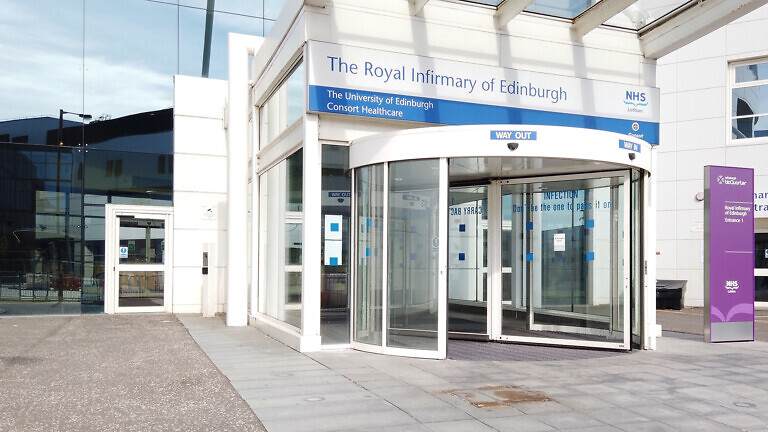The healthcare sector has always aimed to do no harm. However, as the climate crisis escalates, we must consider how to extend this commitment to our environment, says Dr Robin Clark, medical director for Bupa Global and UK Insurance.
The problem
In the healthcare sector we account for an estimated five per cent of the global total of greenhouse gases (GHGs) responsible for climate change.
The urgency of adopting sustainable practices is highlighted by the fact that healthcare is also uniquely vulnerable to climate change as the adverse effects on human health further increase pressure on service delivery [1].
This means the sector must intensify its pursuit of new approaches to obtaining energy, goods, and services sustainably [2] and providing safe, high-quality healthcare that does not negatively impact the planet.
Greater global demand for healthcare, driven by increasing and aging populations, could increase the sector’s impact on the climate and make decarbonisation initiatives even more challenging.
If nothing changes, it’s predicted that the sector’s carbon emissions could increase by 50% by 2050 [3].
At Bupa we believe we can tackle climate change faster and have a far bigger impact if we collaborate across our sector.
We partnered with The University of Manchester and The Tyndall Centre for Climate Change Research on a report, Transforming Healthcare for a Greener Tomorrow, which encapsulates the critical role the healthcare sector must play in driving global environmental sustainability.
It also provides a comprehensive roadmap for transitioning to low-carbon operations that uphold patient care standards.
We believe its findings are a call to action for everyone working in healthcare to act on the climate crisis and to make positive changes in how we work. We want to open up the conversation about building sustainability into healthcare, share best practice and work on common challenges together.

Our methodology
Our report is based on a progress review of the healthcare sector’s carbon-reducing actions. We gathered additional insight through interviews with 16 organisations, including hospital and technology providers, NHS trusts, insurers, industry associations, and sustainability forums.
We also reviewed best practices in five non-healthcare sectors: retail (supermarkets), energy network operators, food and beverages, information and communications technology (ICT), and construction.
What we found
The healthcare sector’s response to climate change has intensified in the last five years and, despite the impact of Covid-19, it’s catching up with others in its actions to reduce GHG emissions and build resilience to the effects of climate change.
However, the link between climate change and health outcomes means the healthcare sector should be a leading proponent of climate action.
The World Health Organisation (WHO) estimates that between 2030 and 2050, climate change is expected to cause approximately 250,000 additional deaths every year from malnutrition, malaria, diarrhoea, and heat stress alone [1].
Since 2010, leading companies in sectors such as food and beverage, manufacturing, ICT, financial services, and agriculture have published climate change strategies and reported their carbon emissions.
In the retail sector, a significant number of shoppers prioritise sustainability, a trend that supermarkets have recognised and are addressing.
By comparison, healthcare has been a late adopter. Major providers in Europe, North America, and Australia only produced their first climate change targets or emissions reports in 2020.
This is partly because of how emerging regulatory frameworks, such as the Task Force on Climate-Related Financial Disclosures (TCFD), affect different sectors. Healthcare has often been exempted from both mandatory and elective environmental standards due to the primary importance of medical care.
So far, the drivers for healthcare organisations working towards climate change targets are mainly driven by internal stakeholders.

What other sectors are doing
While target setting and carbon reporting in healthcare is generally less advanced than other sectors, organisations within other sectors are not necessarily much further ahead on climate action.
Leading organisations cannot drive sector-wide climate impact reductions on their own. The retail (supermarkets), energy network, food and beverage, ICT, and construction sectors have organisations that set bold targets, share detailed carbon disclosures, and are making significant progress on emissions reduction. However, none of these practices are sector-wide.
In the UK food and beverage sector, the UK supermarket retailers Sainsbury’s, Waitrose, Co-op, Tesco, and M&S are examples of leading companies that have been engaged in climate change action for more than a decade.
For energy procurement, strategies are in place to exceed 100% renewable energy tariffs to deliver greater carbon benefits through onsite energy generation and power purchase agreements for Scope 2 emissions.
The sector has also long acknowledged the challenge of dealing with Scope 3 supply chain emissions (between 90% and 95% of emissions of the top supermarket retailers).
For example, Iceland is using choice editing (where the selection of products available to consumers is limited to achieve an end goal) in its aim to remove palm oil from all brand products.
Carbon footprint labelling is an example of giving customers data to drive more sustainable shopping. Still, its effectiveness has been contested, with studies showing minimal effect on shopping behaviour [4].
Tesco’s recent Better Baskets scheme guided consumers to sustainable options through offers and promotions. The labelling is more explicit and relies less on consumers interpreting data such as the carbon footprints of products.
The World Wildlife Fund Basket is a more recent evolution of UK supermarket retail’s approach to Scope 3 emissions. The scheme sets a sector-wide ambition on a range of climate and sustainability targets and includes Tesco, Co-op, Waitrose, M&S, and Sainsbury’s among others.
It involves broadening sector coverage, harmonising targets and metrics, and showing a change in approach on Scope 3 emissions towards greater sectoral collaboration.
The supermarkets are showing what is possible when organisations are willing to collaborate on sustainability. This is vital to prevent the undermining of shared purposes and alignment of goals and standards. Setting the same standards can help make the adoption of low-carbon methods more consistent.
Next steps for healthcare
The healthcare sector could benefit from learning lessons from the supermarkets, and considering how to implement measures that drive similar outcomes to those the supermarkets were aspiring to.
In our next article, we will explore the opportunities for healthcare providers and the five interventions they can implement to accelerate carbon reductions now and in the next few years.
References
[1] Charlesworth, K.E., M. Jamieson, and M. Jamieson, Healthcare in a carbon-constrained world. Australian Health Review, 2018. 43(3): p. 241-245.
[2] Romanello, M., et al., The 2022 report of the Lancet Countdown on health and climate change: health at the mercy of fossil fuels. The Lancet, 2022. 400(10363): p. 1619-1654.
[3] El-Sayed, A. and M. Kamel (2020). “Climatic changes and their role in emergence and re-emergence of diseases.” Environ Sci Pollut Res Int 27(18): 22336-22352.
[4] Lancet Countdown on Health and Climate Change Committee (2023). Healthy and Resilient Cities.




